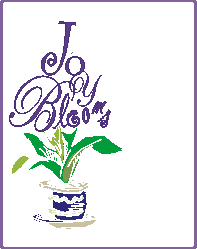|
| |
 |
Joy Blooms in the Garden
Xeriscaping in Colorado
Last Edited on:
05/24/2016 06:35 AM |
|
|
Xeriscaping in Colorado |
|
Xeriscape, not zeroscape, is a water conservation system that promotes creative approaches to reducing the need for water in landscape plantings. |
|
It has an interesting history that began here in 1981. (some sources give the date at 1978) It seems that the Denver Water Department was seeking a term to describe drought-tolerant planting. The term they coined was "xeriscape." Now it is part of
landscaping vocabulary. |
|
The concept of xeriscape landscaping became a popular plan in areas where water is scarce and soil conditions are poor. Contrary to common thought, it does not mean a landscape dominated by rocks or gravel. The choices for plants is surprisingly wide. The
selection includes native plants as well as others that adapt to the local climate. A xeriscape garden uses plants that have low water requirements, making them more able to withstand short periods of drought.
The secret to xeriscape landscaping is to use water in well-controlled amounts and locations. |
|
|
|
There are 3 Xeriscape Zones
In order to conserve water, planting are grouped according to their watering requirements. The plants requiring the least about are placed on the outer edges while those needing the most waters are placed in the center.
Zone 3: The lush, oasis zone should be nearer to your house, and could include the higher water use plants, a small pool of water, a formal area, paths from porches lined with solar lanterns, shade from pergolas, and a
small lawn area using drought-tolerant grasses like buffalograss and blue grama. This zone could take advantage of rainfall runoff from the roof line and gutter downspouts.
|
|
|
There are many flowering perennials that are drought resistent.
- Plants with a silvery foliage such as Artemisia, catmint, and perovskia (Russian Sage) are usually drought resistent.
- Soapwort, Sedum varieties, thymes varieties, mints, oreganos, catnip, Marjoram, sage, hyssop, and savory are also drought resistent.
- Flowers include Sunflowers, Mexican Sunflower, Silver Lace Vine, Oriental and Shirley Poppies, Sea Lavender, Salvias, Penstemon, Lamium, Iris, Daylily, Coreopsis, Echinacea, Black-eyed Susan, Batchelor button, and Baby’s breath.
|
|
Experiences in Colorado Gardening: |
|
|
|
|
Links to Zeriscaping Web Sites |
|
|
[gardening/g-insert.htm] |
|